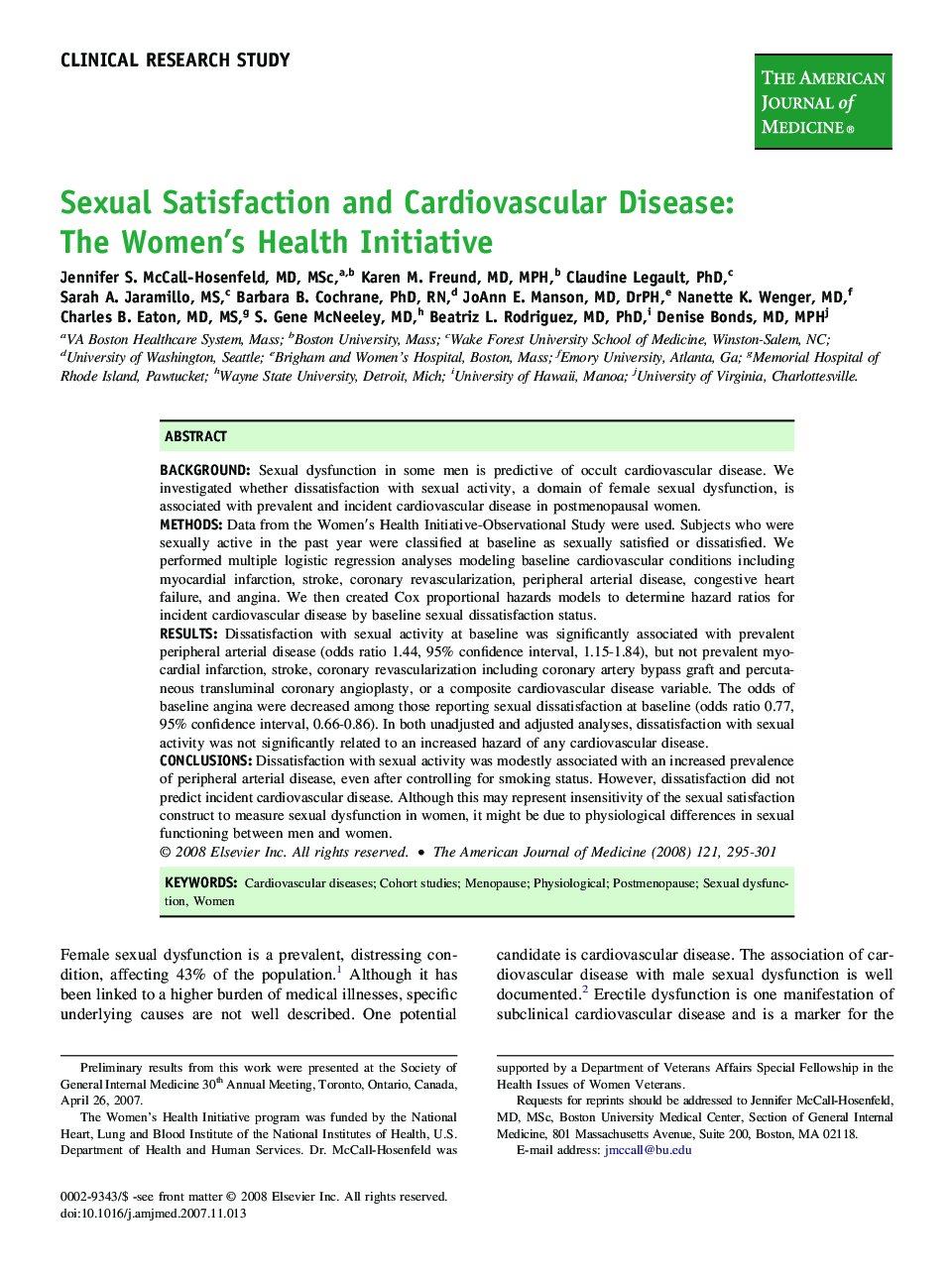| Article ID | Journal | Published Year | Pages | File Type |
|---|---|---|---|---|
| 2724934 | The American Journal of Medicine | 2008 | 7 Pages |
BackgroundSexual dysfunction in some men is predictive of occult cardiovascular disease. We investigated whether dissatisfaction with sexual activity, a domain of female sexual dysfunction, is associated with prevalent and incident cardiovascular disease in postmenopausal women.MethodsData from the Women′s Health Initiative-Observational Study were used. Subjects who were sexually active in the past year were classified at baseline as sexually satisfied or dissatisfied. We performed multiple logistic regression analyses modeling baseline cardiovascular conditions including myocardial infarction, stroke, coronary revascularization, peripheral arterial disease, congestive heart failure, and angina. We then created Cox proportional hazards models to determine hazard ratios for incident cardiovascular disease by baseline sexual dissatisfaction status.ResultsDissatisfaction with sexual activity at baseline was significantly associated with prevalent peripheral arterial disease (odds ratio 1.44, 95% confidence interval, 1.15-1.84), but not prevalent myocardial infarction, stroke, coronary revascularization including coronary artery bypass graft and percutaneous transluminal coronary angioplasty, or a composite cardiovascular disease variable. The odds of baseline angina were decreased among those reporting sexual dissatisfaction at baseline (odds ratio 0.77, 95% confidence interval, 0.66-0.86). In both unadjusted and adjusted analyses, dissatisfaction with sexual activity was not significantly related to an increased hazard of any cardiovascular disease.ConclusionsDissatisfaction with sexual activity was modestly associated with an increased prevalence of peripheral arterial disease, even after controlling for smoking status. However, dissatisfaction did not predict incident cardiovascular disease. Although this may represent insensitivity of the sexual satisfaction construct to measure sexual dysfunction in women, it might be due to physiological differences in sexual functioning between men and women.
